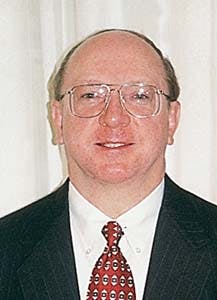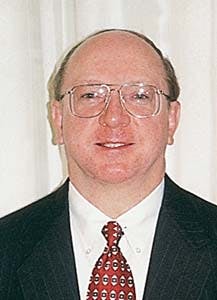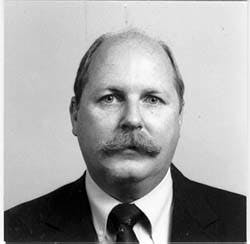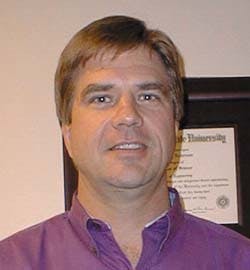REMEDIAL SQUEEZE SYSTEMS-1
Ronald E. Sweatman, Calvin W. KesslerNewly developed remedial squeeze systems successfully control lost circulation problems, seal off high-pressure water and gas zones, and stop underground blowouts.
Halliburton Energy Services
HoustonJohn M. Hillier
Sonat Exploration Co.
Houston
These conditions result in mud losses, wasted rig time, lost holes, sidetracks, abandoned wells, relief wells, and unrecoverable petroleum reserves. The new systems also increase the integrity and frac gradient of weak zones to safely allow deeper drilling.
In early 1996, a service company initiated a project to review conventional remediation materials and methods with the intent to search for more-effective remedies. The project led to the development of several lost-circulation material squeeze systems (LCM squeeze systems).
Squeeze system requirements
Several operators have asked for new solutions to reduce or eliminate lost-circulation trouble, which can cost hundreds of thousands to millions of dollars a well. These unplanned costs resulted from wasted rig time, unsuccessful remedial work, and mud losses into a variety of weak zones (exit points). API data indicate that lost circulation alone occurs in 18-26% of all wells (Table 1 [9,105 bytes]). 1In many situations, operators must plug and seal exit zones in order to stop cross-flows, which otherwise would lead to underground blowouts. The preferred solution consisted of plugging and sealing off the flow's exit point, followed either by weighting-up the drilling fluid to overbalance the flow's influx point (high-pressure zone) or plugging and sealing off the flow's influx zone.
Operators requested that LCM squeeze systems perform the following:
- The treatment should withstand certain equivalent mud-weight (EMW) squeeze pressures. This allows the use of increased mud weights to overbalance deeper, higher pore pressure zones once drilling resumes.
- The seal should endure several weeks of drilling until the next casing-seat depth is reached.
- The plugging seal should withstand swab and surge pressures applied during trips and casing runs.
- The treatment should allow higher pump rates for increased mud displacement and should also compensate for the accompanying higher equivalent circulating densities (ECDs) encountered during cementing.
- The treatment should allow for the immediate washout of excess LCM squeeze system in the hole, eliminating the waiting period after the maximum squeeze pressure is obtained.
Participants also concluded that new application procedures should be developed to improve the success rate of new systems. A solution utilizing problem-identification techniques and analysis, customized application equipment and procedures, and new LCM squeeze systems increases the initial success rate in achieving the project goals and objectives.
Field-test results have benefited accordingly. Sometimes, field-test results suffered because there was a lack of experience using traditional and new LCM squeeze system procedures.2 Lack of problem-identification data also contributed to the small percentage of field tests that achieved lower than desired drill-ahead EMW squeeze pressures.
Some of these unavailable data included:
- A record of mud-loss rate or severity
- Design information for LCM pills already used
- Logs showing crossflow fluid type/rate
- Job procedures for necessary downhole tools
- Specifications for certain rig equipment.
New formulation
The new LCM squeeze system formulations are commonly called "reactive pills." Unlike old formulations, however, they rapidly form a rubbery mass when thoroughly mixed at certain shear rates in combination with water, oil-based drilling/completion fluids, formation fluids, special treated muds, completion fluids, or a combination of drilling/completion and formation fluids.Under certain flow conditions, the new LCM squeeze systems can travel or finger through the well-bore fluid for long distances before reacting in the weak or high-pressure zones.
The peaks and valleys from pressure recordings support the theory that these new LCM squeeze systems can be self-diverted in order to seal off the numerous weak points in a single application. The new systems have simplified and improved placement procedures, lowered plugging system volumes, and reduced the number of treatment stages compared to conventional LCM squeeze systems.
The new systems have:
- Allowed higher EMW squeeze pressures and maintained complete sealing against much higher swab/surge pressures
- Eliminated severe water-based, oil-based, and synthetic oil-based mud losses
- Plugged-off weak zones next to pay zones without production impairment
- Sealed-off high-pressure gas, allowing lower mud weights
- Killed several underground blowouts
- Saved tens to hundreds of times their own cost
- Eliminated waiting periods to allow immediate formation integrity testing.
Old vs. new methods
Conventional LCM squeeze system formulations often ineffectively stop lost circulation because of delayed and inadequate consistency development. The new systems are designed to create a plugging consistency as they enter the weak zone.Lost circulation can occur in weak zones that are easily split apart or in fractures that are induced by drilling fluid pressures because of the poor mechanical strength of the formation. Some weak zones break down rapidly because the formation has natural fractures, vugs, or cavernous channels.
If the LCM squeeze system does not develop a very high consistency quickly, the system will act like a stimulation fracturing fluid to create new or larger fractures or will allow bypassing of mud in natural fractures and vugular formations.
Lack of rapid plugging action allows fingering of the plugging system inside the weak-zone flow path. This causes partial plugging of the weak zone and continued mud losses.
As a result, other fractures in the open hole cannot be plugged by conventional LCM squeeze systems because of the large, often unavailable LCM squeeze system volumes required to plug the newly created fractures or the partially plugged weak zone.
This problem is compounded by crossflows. Crossflows can wash away or dilute conventional LCM squeeze systems before the treatments reach the required consistency to plug and seal the exit zone or the influx zone.
To be effective in eliminating crossflows, the LCM squeeze system must develop an extremely high-fracture plugging consistency (FPC) within seconds or minutes rather than hours required for conventional LCM squeeze systems (Fig. 1 [37,436 bytes]).
The new systems have been designed and field-tested in the following conditions:
- Well temperatures ranging from less than 80° to greater than 325° F.
- Highly vugular or channeled zones
- Gas, oil, and water crossflows that dilute, degrade, or wash away other systems
- Weak zones that are easily fractured by water or oil-based drilling fluids
- Underground blowouts (both influx/exit zones) with low to very high flow rates
- Overpressured or high flow rate water and gas sands
- Multiple weakpoints or weak zones causing mud losses
- Depleted sands and high-pressure, low-volume gas zones next to pay zones
- Immediate wash through excessive treatments left in the well bore
- Formation integrity testing during the final time period in the LCM squeeze system treatment.
First, the FPC's rubber-like texture extrudes and form-fits itself into the fracture or channel.
Next, FPC friction against the fracture or channel develops additional flow resistance. This resistance causes surface pressure to increase while the LCM squeeze system continues to be slowly displaced.
Finally, a combination of extrusive pressure, friction pressure, and in some cases structural-strength bridging pressure (fiber or coarse particles) will result in a flexible seal near the well bore.
The LCM squeeze system left in the well bore remains pumpable because it is not exposed to mud mixing, shearing, compaction, fluid loss, and bridging forces found only in the smaller flow path area inside the weak zone.
Lack of these mechanisms causes the LCM squeeze system to be self-diverting in multiple weak-zone plugging using a single treatment. When killing crossflows or underground blowouts, the LCM squeeze system diverts to seal the influx zone after plugging all the lower-pressure weak zones.
Two LCM squeeze system treatments or stages may likely be required when exit/influx zones are positioned far apart, especially if the treatment is performed in a small-diameter hole, or if the treatment is performed in sloughing shales.
Sloughing shales can block the lower well bore section and prevent an LCM squeeze system from treating the formations immediately below the top of the shale blockage. Multiple treatments are needed as new weak points are exposed in drilling deeper or after washing out hole packoffs.
New chemical technology is being applied to old formulations to create these new LCM squeeze systems. This new chemistry, when used with controlled pump rates and pressures will create seals that hold much higher drill-ahead EMWs.
The new systems can be self-diverting, which allows them to seal the weakest zone first then sequentially proceed to the next weakest zones, all within a single treatment across long intervals.
The wedging effect of many plugged fractures may artificially increase formation integrity. Field tests have shown that large pressure increases can be applied without leakage into the weak zones.
Mud weights much higher than the formation fracture-gradient weight can be circulated across weak zones after treatment with the new LCM squeeze systems.
Soft, rubbery, and semihard versions of the new LCM squeeze systems are needed when operators must drill ahead to prevent sidetracking back into the untreated section of weak zones.
A rubbery, semihard LCM squeeze system is used when swab/surge pressures are expected to bypass or dislodge a hard version containing cement, which could again start losses into the weak zone.
A hard LCM squeeze system containing cement is used when there is no need to drill-out and it becomes necessary to seal the zone permanently in order to meet regulatory requirements.
Problem identification
To design a successful first-time LCM squeeze system treatment, engineers must have enough well information to accurately define the problem and select the most-effective treatment type and procedure.Some of the most critical information is listed as follows:
- Depths for the last pipe's shoe, the weak zone, and influx zone
- Well bore fluids' densities and types
- Mud-loss and crossflow rates
- Casing and drill pipe hole diameters
- The types of LCM and LCM squeeze system used in earlier applications
- The weak zone type.
To establish a well-control plan for an underground blowout, engineers must know the source of the crossflow, the location of the thief zone, and the annular flow rate. Various wire line logging tools can be run through the drillstring for diagnostics.
The most commonly used logging tools for drilling support are temperature and noise tools. In the last decade, oxygen-activation/water-flow determination techniques have been developed that require the use of pulse-neutron logging tools, or certain carbon-oxygen logging tools.
Noise logs
The noise-logging tool (borehole audio tool) is a passive-listening device (hydrophone) that responds to sounds in and around the well bore. 3 The frequency and amplitude of the sound level that the downhole flow generates is a function of the fluid type and the choking of the flow through various downhole restrictions.Fig. 3 [54,746 bytes] shows a noise log run in an adjacent well bore in which an underground blowout is present. Two shallow sands were charged by the downhole flow. This example was recorded through six concentric strings of pipe: 30-in. conductor, 20-in. surface, 133/8-in. casing, 95/8-in. casing, 7-in. tie-back, and 31/2-in. tubing.
This example demonstrates noise-logging sensitivity when monitoring downhole flow. Because the tool is sensitive, it must be kept stationary while acquiring noise data so that road noise is not recorded. Recordings are made at various depth stations in the well.
A temperature-logging tool is generally combined with the noise-logging tool. The temperature tool identifies depth intervals at which station recordings should be taken.
Temperature logs
The temperature-logging tool monitors changes in the geothermal gradient of a well. Circulation parameters change the static geothermal gradient because cool mud is injected down the drillstring (Fig. 4 [54,130 bytes]).Mud circulation lowers the temperature in the lower part of the well and raises the temperature in the upper part. When circulation discontinues, horizontal and some vertical heat flow temporarily occurs, but eventually ambient temperature is reached.
Fluid channeling, such as a downhole lost-circulation situation will alter the temperature-log response from a normal circulation gradient to one with several thermal deflections. From this response, both the source of the downhole flow and the location of the thief zone can be determined.
Fig. 5 [58,005 bytes] and Fig. 6 [48,266 bytes] show temperature and noise log responses in a downhole flow situation, along with responses after a successful kill operation.
The downhole flow rate of the channeled fluid can be estimated from:
- Nodal analysis and thermal conductivity of the various downhole materials
- Hole size
- Flow path description-tubular summary.
By using this method, engineers determined that an annular flow rate of 1,000 bw/d should be used to treat an underground blowout. The exit (weak) and influx (high-pressure gas and water) zones were plugged and sealed using a single treatment.
Oxygen-activation logs
Oxygen-activation logging tools, such as pulse-neutron capture (PNC) or pulse-neutron spectroscopy (PNS) tools can detect downhole water flow. 4 5 If oxygen is irradiated with neutrons that have energies greater than 10 Mev, the following reaction is likely:16O + n --- 16N* + p (1)
The nitrogen is left in an excited state, which beta-decays back to oxygen with a 7.35 sec half-life. The oxygen immediately emits a gamma ray used to determine oxygen activation.
In order for the tool to detect water, its fluid velocity must be great enough for the water to travel from the neutron generator to the detector within a few backgrounds.
In other words, in order to be detected, the fluid velocity must be greater than the logging tool speed.
The simplest method for determining annular flow velocity is to log with PNC tools at varying speeds until the logging speed is faster than the annular water flow. When this condition occurs, oxygen activation is no longer detected.
More-advanced methods are available for accurately determining water velocity or that of other oxygen-rich fluids such as CO2. These methods include various generator-timing schemes and detector spacings.
Logging at different cable speeds, however, will minimize any irregular borehole effects such as washouts or key-seated drill pipe. These borehole effects could cause an incorrect annular fluid velocity if a stationary measurement were taken in a washed-out or tight hole section. Background measurements for a water flow are shown in Fig. 8 [70,197 bytes]. These measurements were made while the neutron generator was cycling.
References
- Worldwide Cementing Practices, first edition, API, January 1991.
- Messenger, J.U., et al., Lost Circulation, PennWell Publishing Co., Tulsa, 1981.
- Britt, E.L., "Theory and Applications of the Borehole audio Tracer Survey," SPWLA 17th Annual Logging Symposium, El Paso, June 1976.
- Arnold, D.M., and Papp, H.J., "Quantitative Monitoring of Water Flow Behing and in Wellbore Casing," JPT vol. 31, January 1979.
- Jacobson, L.A., Ethridge, R., Wyatt Jr., D.F., "A New Thermal Multigate Decay Lithology Tool," SPWLA paper M, Tulsa, June 1994.
The Authors
Ron Sweatman is a conformance advisor for Halliburton Energy Services in Houston. He has 29 years' experience in pressure pumping services and cement manufacturing. Sweatman majored in chemistry at LSU and later studied petroleum engineering at USL. He has served on committees and task groups for the API, SPE, DEA, CEA, and BSI.
Calvin W. Kessler is a technical consultant for Halliburton Energy Services in Houston. He was employed as a field and reservoir engineer with a major U.S. oil company before joining Halliburton in 1973. His primary areas of responsibility are integration of open and cased hole logging and perforating services.
John Hillier is a senior drilling and production engineer for Sonat Exploration Co. in Houston. He has been with Sonat 4 years and is involved with onshore drilling and production assignments along the Texas and Louisiana gulf coasts. He received a BS in mechanical engineering from Texas A&M University in 1979 and has over 17 years of diverse engineering experience in the industry.
Copyright 1997 Oil & Gas Journal. All Rights Reserved.





